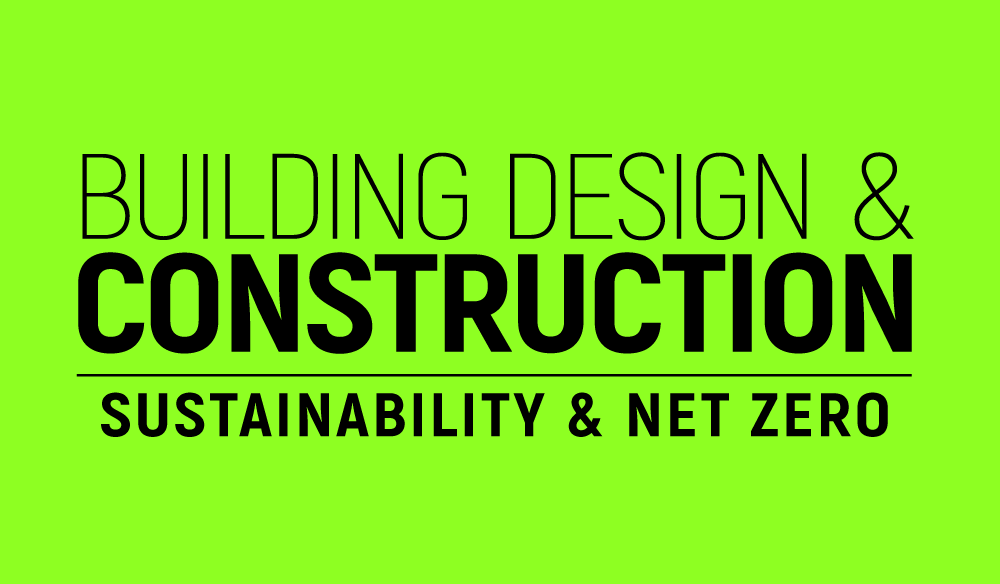The UK became the first major economy in the world to pass into law that it will bring all greenhouse gas emissions to net zero by 2050. Quickly following suit, we have seen many developers, contractors, engineers, and local authorities all pledging their commitment to ‘Net Zero’ with targets ranging from 2030 to 2050. As the transition to a zero-carbon economy accelerates, how will the supply chain from policy makers, to architects to waste management services impact how these targets are met?
Use and re-use first
If we look at the waste hierarchy, the last line of defence before landfill is to recycle and recover waste. However, this course of action still takes resources, costs, and consumes energy. Businesses need to evolve their thinking and actively reduce the amount of waste going through traditional routes of waste disposal, such as skips, bins and cages, in the first place.
There needs to be a shift in focus from recycling to waste prevention – if a waste material isn’t going through existing methods of waste disposal and being reused or repurposed, should it actually be classed as waste at all? Construction companies should be identifying opportunities to reuse items prior to strip out and demolition stage. These items can then be matched with charities, social enterprises or local organisations in need. Also, for any ‘clean’ excess materials, these can be exchanged or bid for by other construction sites. There are tools available such as Project DIVERT and MATExch online platforms that have been established to facilitate this and provide data on the carbon outcomes based on the decisions that are made.
Stay local
If there is a carbon measure against every project, then ‘off setting’ is simply not the answer. While planting trees is a good thing, it is not the solution. We need a full carbon track and tracing system that is adopted from the outset of a design through to completion. This will make sure all decisions throughout the project are made with the intention to keep carbon to a minimum. An easy example of this is to source local suppliers and local products. For waste items identified as reusable, we can facilitate the diversion of these to the local community such as libraries may need floor tiles, local colleges may need construction sand for building courses, and homeless shelters may need cutlery and white goods. This stops the waste items going through the traditional routes of waste disposal and contributes social value and community legacy in the area.
Early intervention is key
Architects and design teams will play a huge role in assisting construction contractors address the carbon potential at the design stage. If projected carbon data around waste away services is calculated in the ‘project planning and design’ phase (ideally RIBA Stage 2) of a building refit or refurbishment project, a pre-construction and environmental audit (PCEA) can be implemented to influence the decisions being made by the designers and environmental teams, with actual carbon data to reference. Within that calculation, we must also include the embodied carbon. If materials can be reused, less will be manufactured and this is a huge carbon saving when you see it on paper. With this intelligence, the waste management plan can identify opportunities for:
- Facilitating the reuse of
existing materials including furniture, floor finishes, ceiling tiles, and window
coverings to local organisations such as schools, libraries, charities, and
refuges. - Segregating clean excess
construction material such as plasterboard, ceiling tiles, and floor coverings that
can be bought locally by others or transferred to other live construction
sites. - Ensuring
items that can be recycled and reprocessed such as glass, metal, and timber are
segmented, and the end destination is transparent - Lowering
waste costs, less waste means less skips - Reducing
emissions from transporting waste - All
documented with Duty of Care, end destination transparency and a carbon measure
Putting these processes in place will mean there is actually minimal waste going into skips, to Materials Recycling Facilities (MRF’s) or EfW (Energy from Waste) Plants.
Construction companies are responsible for the environmental impact of their site, therefore in order to meet standards, gain certification or meet council regulations, they must demonstrate they are making improvements to become more sustainable. However, it is not acceptable for companies to accept on behalf of their clients a blanket 98% recycling rate from the waste supply chain. This is not ‘their waste’ but that of all waste received to one destination. Construction companies can demonstrate, if planned and forecasted correctly, 100% end destination, 100% re-use, and a 100% recycle rate depending on the where the waste/ resource has been sent to.
If your waste target for zero carbon is ‘zero waste to landfill’, then it’s already not good enough.
We have found that while targets are in place within environmental audits to lower the carbon impact of waste materials, few have the data measurements and importantly the carbon track and trace methods which can help reduce carbon through the project life cycle.
The fact that no one collates this data is a problem in itself and one we are currently trying to solve using our carbon track and trace technology.
A worrying issue raised by the Electrical Contractors Association (ECA) in a survey published last year was that almost half of local authorities in England did not know their carbon footprint, while 47 per cent said they did not have a plan in place for reducing the carbon emissions resulting from their built assets. If you don’t know what your carbon footprint is in the first place, how can you implement dynamic plans to reduce it? This means there must be a huge push towards calculating carbon savings and implementing carbon saving initiatives in the early stages of a project to have any chance of meeting the zero carbon targets set.






